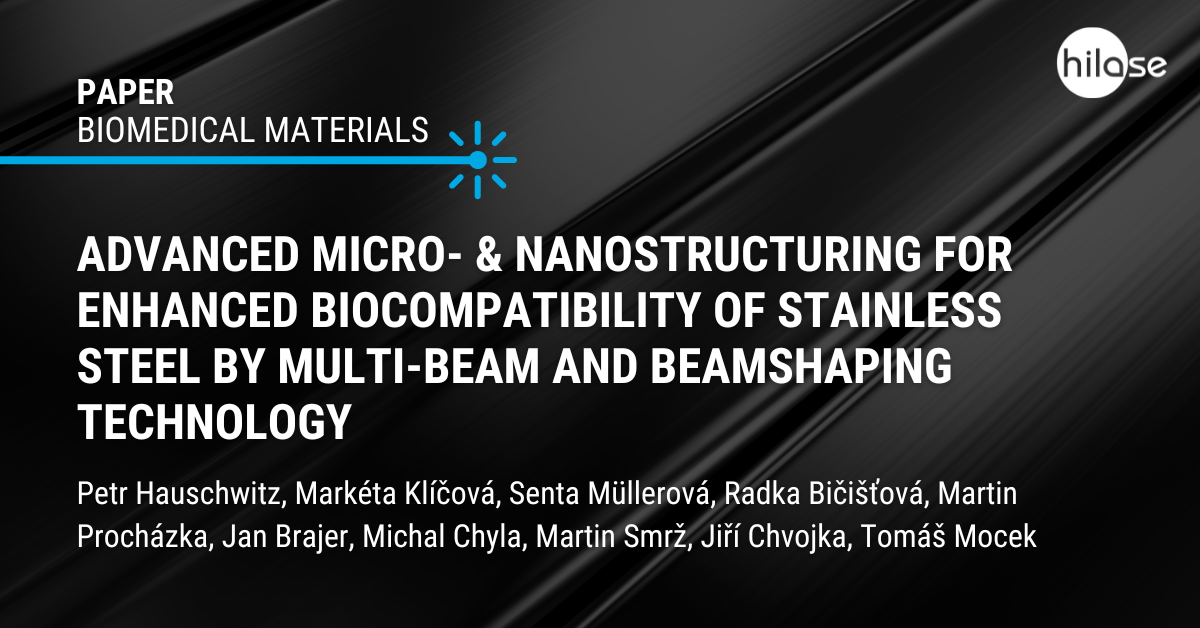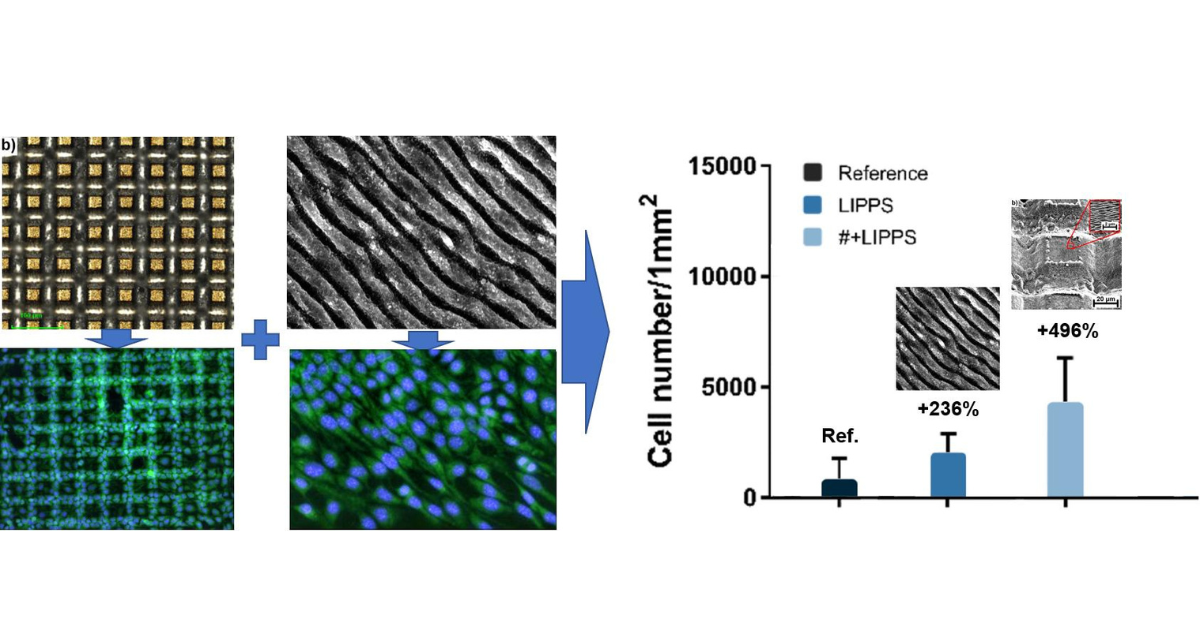Researchers from several teams of the HiLASE Centre have contributed to the newly published paper in the Biomedical Materials journal: Petr Hauschwitz (team leader of Laser Micromachining – LMM), Radka Bičišťová (Ph.D. student: LMM), Martin Procházka (Ph.D. student: LMM), Jan Brajer (head of the Industrial Laser Applications Department – ILA), Michal Chyla (team leader of Commercial Laser Development), Martin Smrž (head of the Advanced Laser Development department – ALD) and Tomáš Mocek (head of the HiLASE Centre).

Working on the paper titled Advanced micro- & nanostructuring for enhanced biocompatibility of stainless steel by multi-beam and beamshaping technology, they joined forces with Markéta Klíčová, Senta Müllerová and Jiří Chvojka from the Technical University in Liberec.
Biocompatibility is one of the key issues for implants, especially in the case of stainless steel with medium to low biocompatibility, which may lead to a lack of osseointegration and consequently to implant failure or rejection. To precisely control preferential cell growth sites and, consequently, the biocompatibility of prosthetic devices, two types of surfaces were analyzed, containing periodic nanogrooves laser induced periodic surface structure (LIPSS) and square-shaped micropillars. For the fast and efficient production of these surfaces, the unique combination of high energy ultrashort pulsed laser system with multi-beam and beamshaping technology was applied, resulting in increased productivity by 526% for micropillars and 14 570% for LIPSS compared to single beam methods. In vitro analysis revealed that micro and nanostructured surfaces provide a better environment for cell attachment and proliferation compared to untreated ones, showing an increase of up to 496% in the number of cells compared to the reference. Moreover, the combination of LIPSS and micropillars resulted in a precise cell orientation along the periodic microgroove pattern. The combination of these results demonstrates the possibility of mass production of functionalized implants with control over cell organization and growth. Thus, reducing the risk of implant failure due to low biocompatibility.









